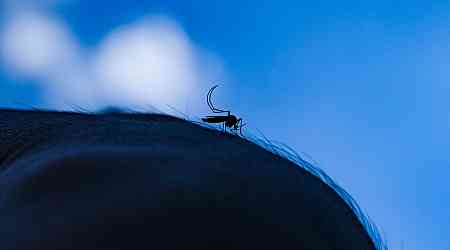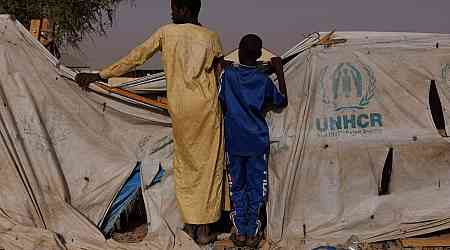
Mosquito-borne diseases seem to be everywhere this year. Towns in Massachusetts are shutting down public parks and other outdoor areas after officials learned that mosquitoes in the region are carrying eastern equine encephalitis, a rare but deadly virus. And Dr. Anthony Fauci, the former top infectious-disease expert in the U.S., recently was hospitalized with West Nile virus that he allegedly acquired from a mosquito buzzing through his backyard.
[time-brightcove not-tgx=”true”]Is this a particularly bad year for disease-spreading mosquitoes in the U.S.? And what can we expect in the future?
Why are mosquitoes are such a big threat
Mosquitoes carry a number of viruses and parasites that can be harmful to human health, including malaria, dengue, yellow fever, chikungunya, West Nile virus, and eastern equine encephalitis. Different species of mosquitoes are adept at spreading different viruses.
The species primarily responsible for spreading eastern equine encephalitis, Culiseta melanura, have drawn the most attention lately because of how deadly the disease is. But fewer than six cases have been reported so far this year in the U.S., and that’s pretty on par with what’s reported in New England every year, says Dr. James Shepherd, an infectious disease expert at Yale University School of Medicine. Despite the recent drastic actions of local authorities in closing down public areas, the number of infections so far this year don’t seem to be any greater than other years.
The more concerning type of mosquito is actually the most common, says Shepherd. Mosquitoes belonging to the Aedes family cause most of the world’s malaria, dengue, yellow fever, West Nile, and Zika. They live primarily in urban, densely populated areas and can replicate in tiny amounts of water—just a capful of water can house hundreds of mosquito eggs. With an estimated 80% of people around the world now living in urban settings, “we are concentrating ourselves in much, much denser communities amongst urban mosquitoes,” Shepherd says.
When it comes to West Nile Virus, data from the U.S. Centers for Disease Control and Prevention show that 38 states have reported more than 370 cases so far in 2024; last year, more than 2,500 cases were recorded nationwide, nearly double that reported in 2022. Experts note, however, that cases fluctuate depending on mosquito populations and the likelihood of human-mosquito interactions.
Read More: How to Make Friends as an Adult—at Every Life Stage
The risk of mosquito-borne infections is likely to increase, however, since mosquitoes are multiplying. “There is data indicating that the larger mosquito populations are, the more likely humans beings are to have an encounter with an infected mosquito,” says Dr. Photini Sinnis, professor and deputy director of the Malaria Research Institute at the Johns Hopkins Bloomberg School of Public Health. “While it’s true that so few mosquitoes are infected, the higher number of mosquitoes makes it more likely that such an encounter will happen.”
Are there more mosquitoes now than before?
“Mosquito populations are really climate-driven and habitat-driven,” says Sinnis. Global warming is making it easier for mosquitoes to survive in more parts of the world—and for longer. The warmer planet also helps them to squeeze in more reproductive cycles, and therefore produce more generations of insects, than ever before.
“With climate change, we see the [habitat] ranges for concerning species like Aedes spreading northward,” says Jonathan Oliver, associate professor in the school of public health at the University of Minnesota. “And all predictions indicate that they are going to spread throughout the Southeast and up the Eastern Seaboard, and fairly high north in the Midwest. As mosquito species become established, people are potentially going to get exposed to a wide range of diseases they carry.”
Take dengue, Zika, chikungunya, and West Nile Virus, for example. Shepherd says that in the past decade or so, as winters have become warner, the species that carries these diseases (A. albopictus) now breeds year-round in Connecticut. “We are going to see the march of these infections moving into more temperate zones in the U.S.,” he says.
Milder winters also mean that those surviving mosquitoes can start reproducing earlier, in early spring rather than closer to summer, says Sinnis. “If it’s now only really cold in January and February, then they can start breeding at the beginning of March rather than in April or May,” she says. “Each breeding cycle increases the population by 10-fold. So by the time we get to summer, their populations have increased substantially.”
Read More: 7 Metrics Everyone Should Know About Their Own Health
Warmer temperatures also affect how viruses survive and thrive inside the insects. “If it’s warmer for a longer part of the year, then the mosquitoes are active longer,” says Oliver, which affects their biology. “If it’s warmer, the virus reproduces faster inside the mosquito and reduces the window of time between when the mosquito becomes infected and when it becomes infectious.” Studies also show that mosquitoes can become increasingly infectious over the course of a season, which in turn raises the chances that they can bite and sicken people with whatever virus they are carrying, he says.
Growing urbanization and densely packed cities—with less-than-ideal sewage and sanitation systems—also provide more and fertile environments for mosquitoes to lay eggs and proliferate. Around the world, “urbanization is occurring in a very haphazard fashion,” says Shepherd. In many cases, “it’s not planned and there is no community development, so these cities are ringed by vast shanty towns that are poorly served without water, sewage, and electricity.” These, he says, “are perfect places for infectious diseases to transmit.”
Another factor is likely fueling the rise of mosquitoes. With increased urbanization comes the destruction of the natural landscape, which contributes to a drop in the biodiversity of species. “The decreased abundance of species is allowing expansion of infectious disease host species and their vectors [like mosquitoes], because they tend to be the most adaptable,” says Shepherd. As abundant insect species are killed off, for example, he says more adaptable ones like Aedes may be filling the void and flourishing.
How to protect yourself from mosquito-borne diseases
Try to avoid coming into contact with mosquitoes in the first place, and lower your chances of getting bitten if you do. That means wearing long-sleeved clothing when outdoors and spraying yourself with insect repellent. You can also eliminate mosquito-breeding grounds by getting rid of any standing water around your home, since mosquitoes just need a little bit of water in which to lay their eggs.
On a broader level, researchers are working on ways to reduce mosquito populations, including traps that attract different mosquito species with specific odors. The traps contain larvicides that destroy any eggs mosquito may lay, thus reducing their populations. But developing the traps requires more detailed knowledge about different species and how to attract them than is currently known, says Sinnis. “What we’d really like to do is to be able to predict when and where mosquito populations might be high,” she says. “But we need to learn more about the habits of specific mosquitoes and where they like to lay their eggs.”
Some scientists are turning to genetic modification to manipulate mosquito populations. By introducing sterile males into a region, for example, they could drastically reduce or even eliminate future generations of insects. But this is still being tested, as researchers want to make sure that plummeting mosquito populations won’t have more lasting or unintended ecological consequences.
Another strategy that appears encouraging is infecting mosquitoes with a bacterium that kills the viruses they may carry. This approach has been used in Southeast Asia and Australia to lower the rates of dengue transmission.
More such approaches are needed in order to fully understand and control mosquitoes and the diseases they carry, say experts. “If we are interested in addressing mosquito-borne diseases before they become really rampant, we need to devote more public health funding to mosquito surveillance,” says Sinnis. With climate change affecting so many species, including mosquitoes, such knowledge is even more critical. “Chances are, [mosquito-borne illnesses] are going to get worse rather than better.”






























